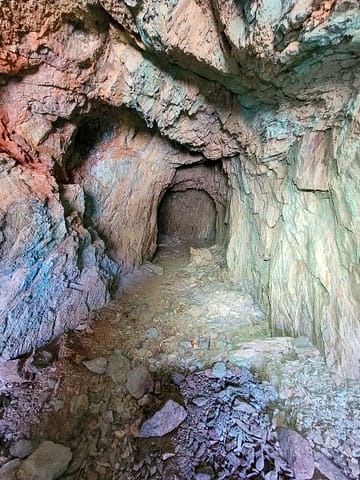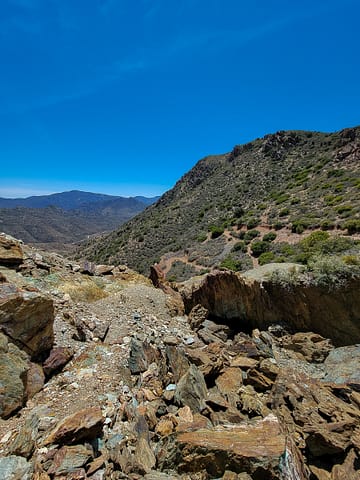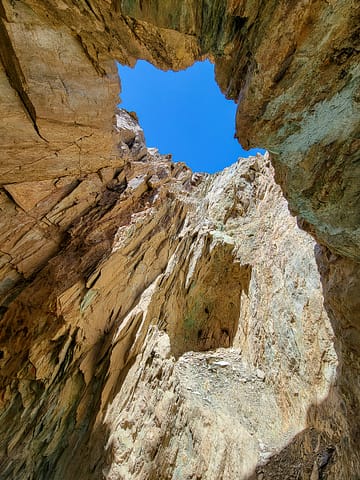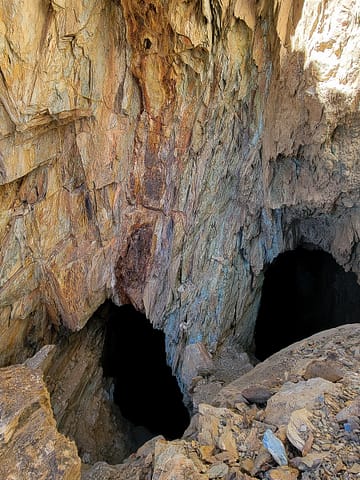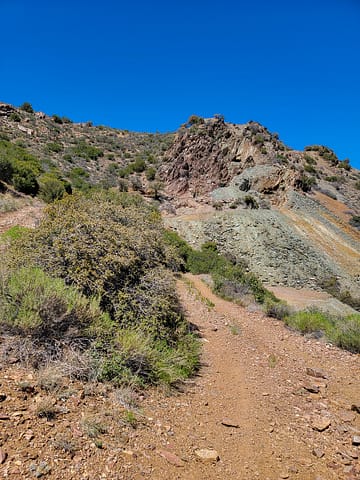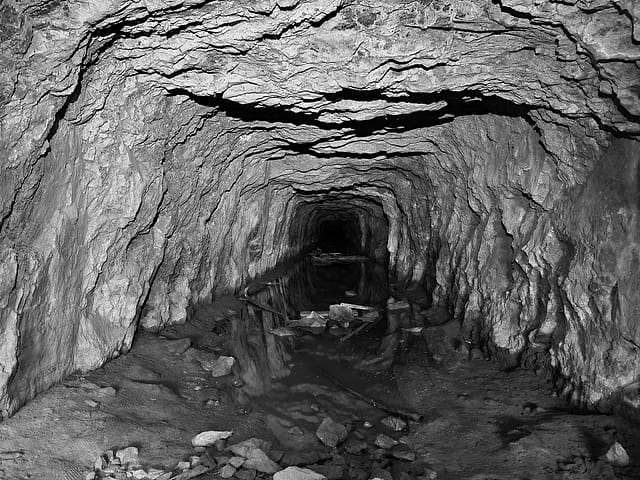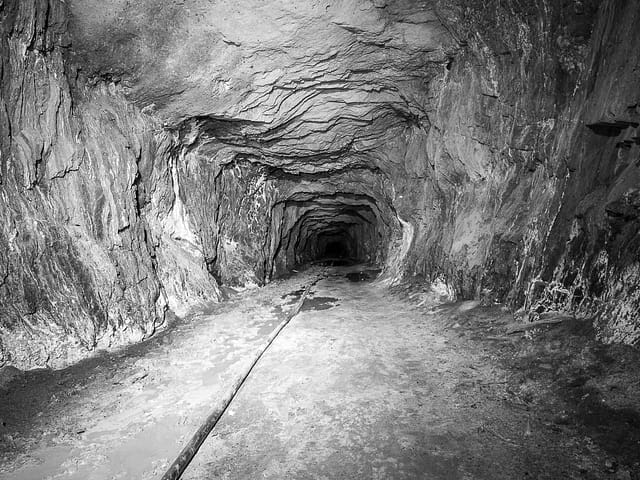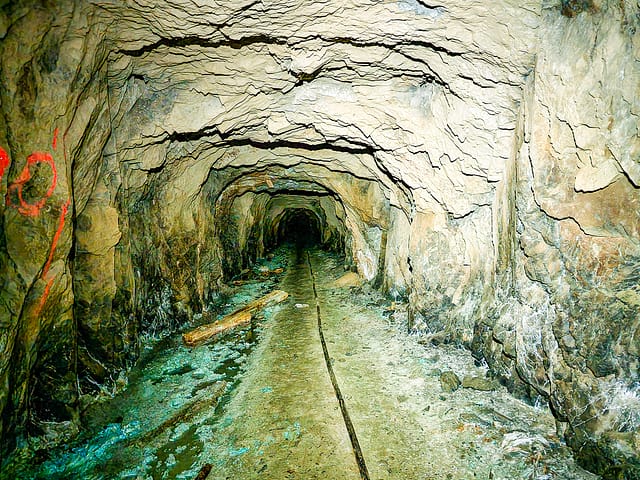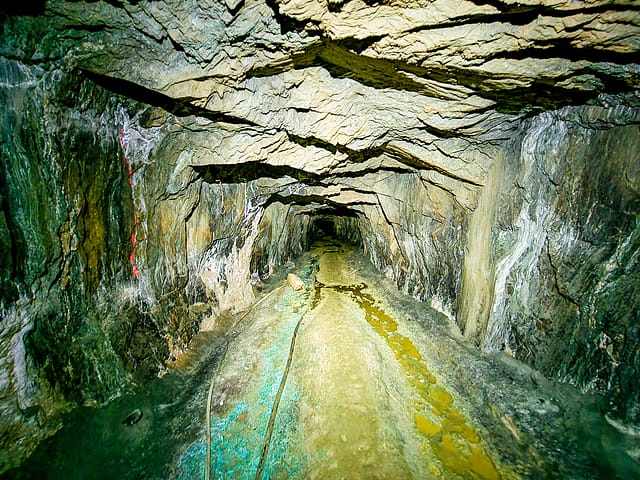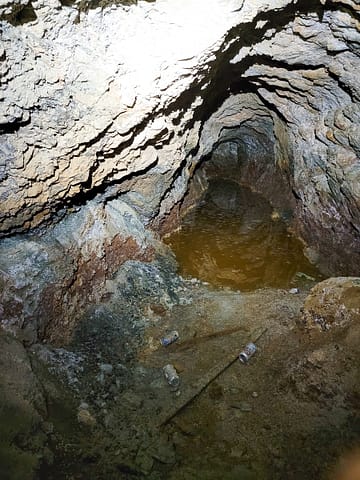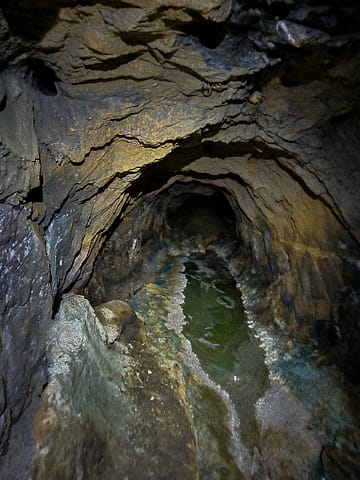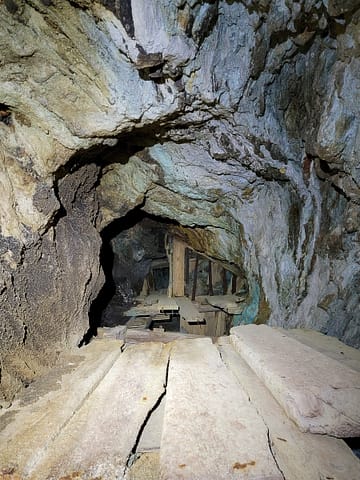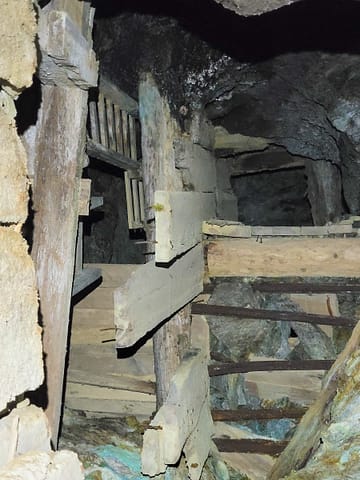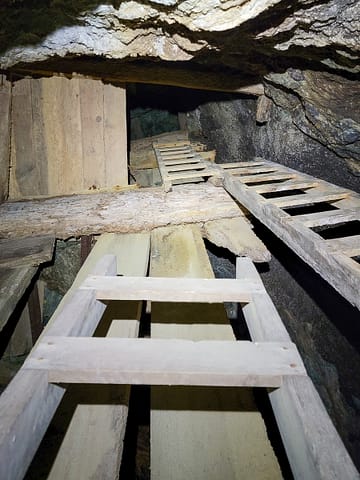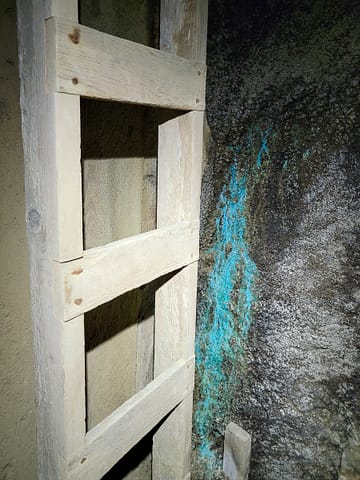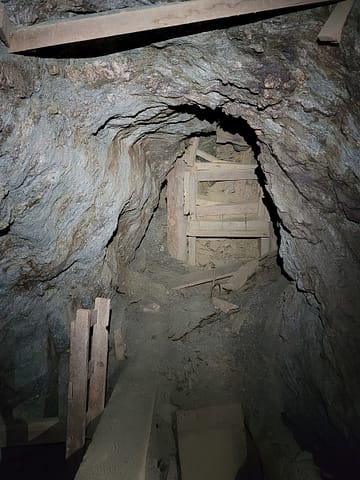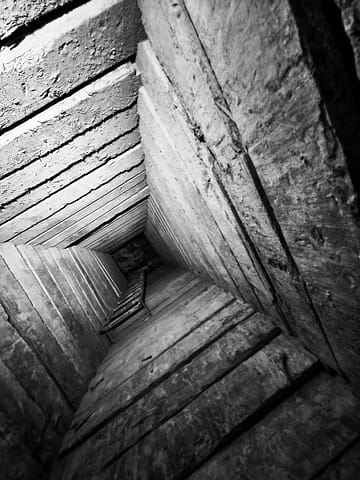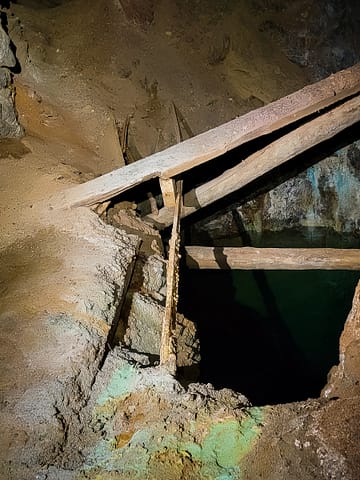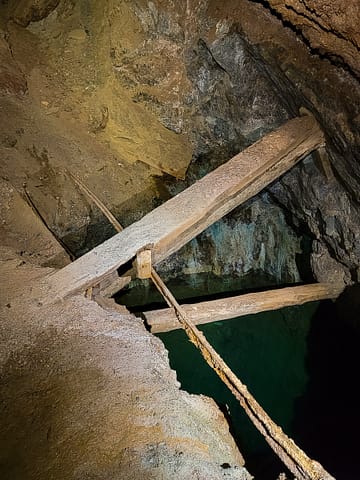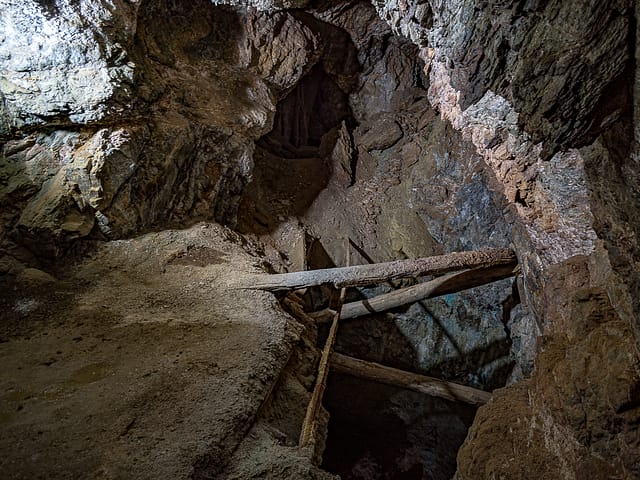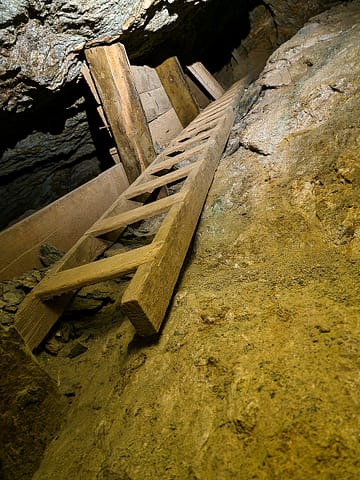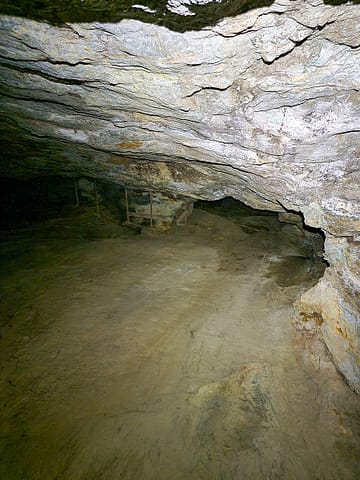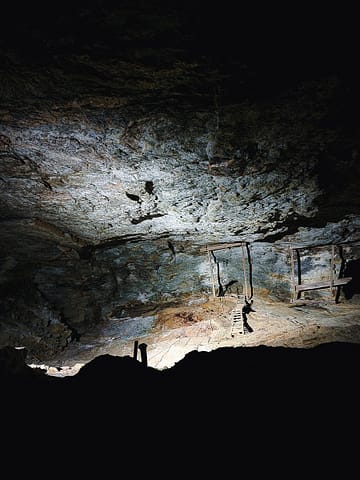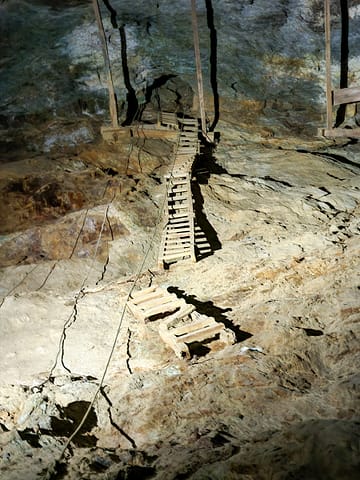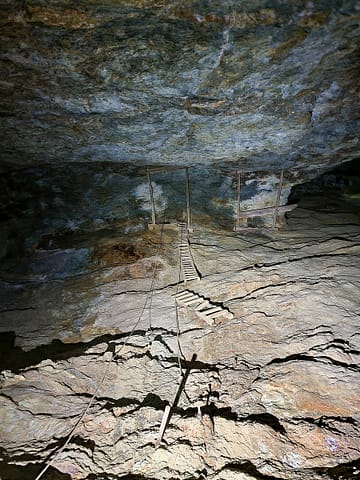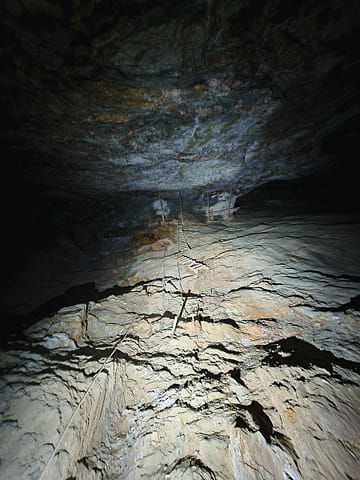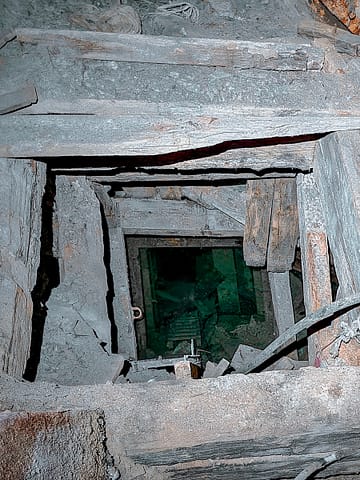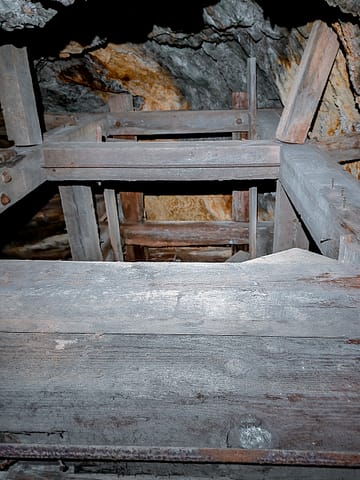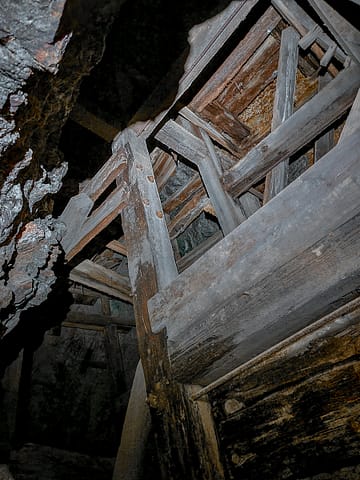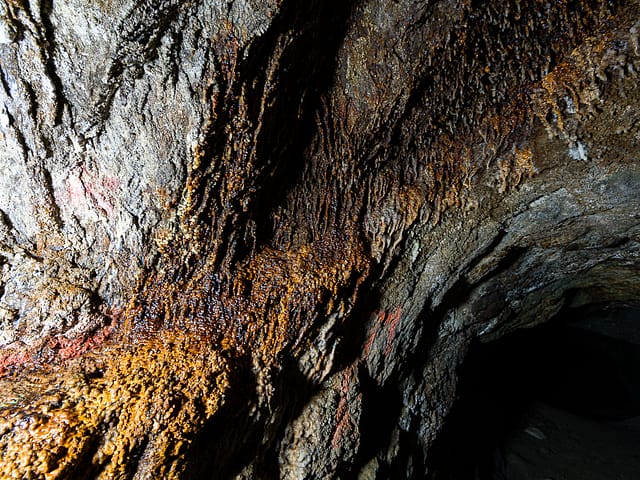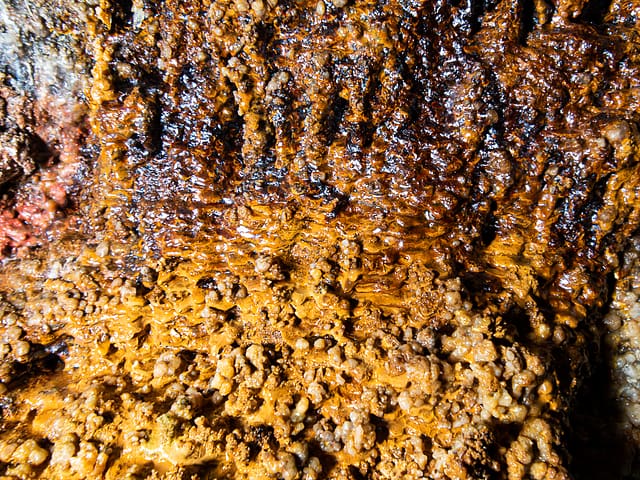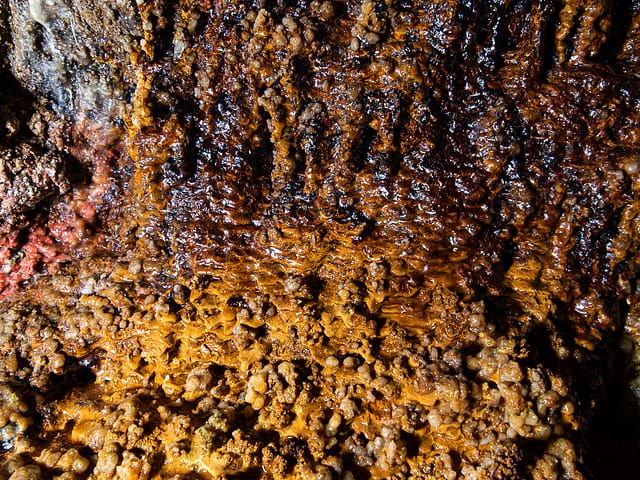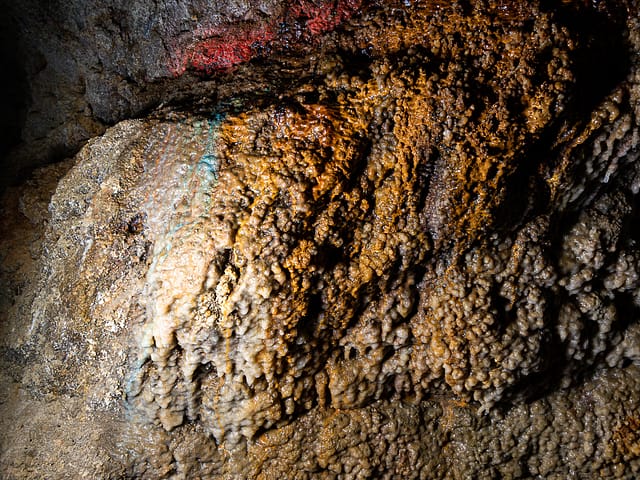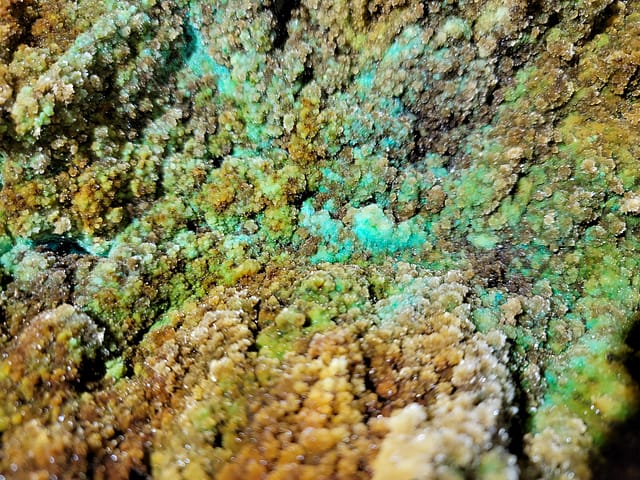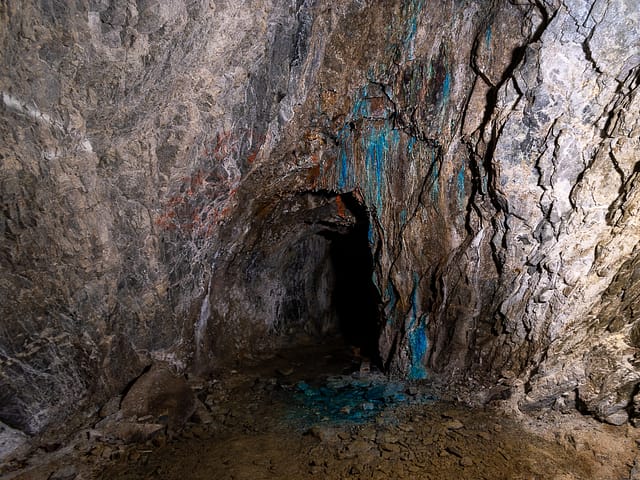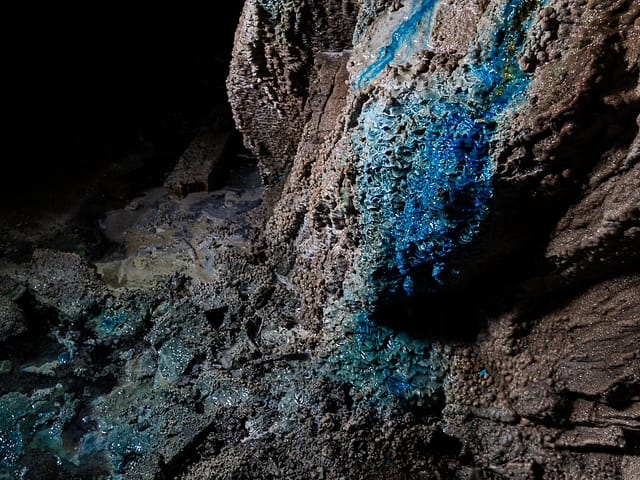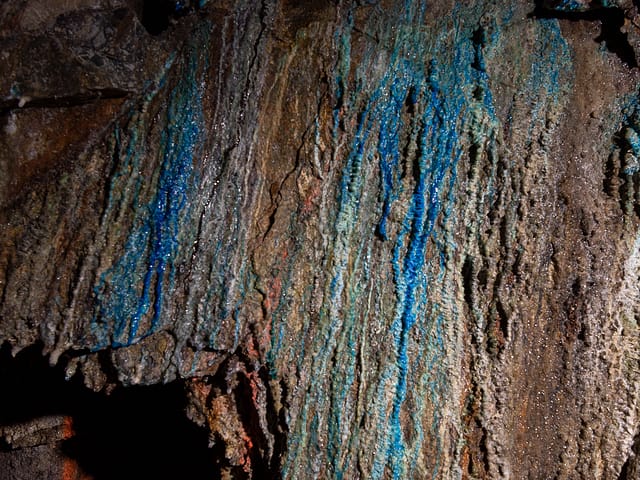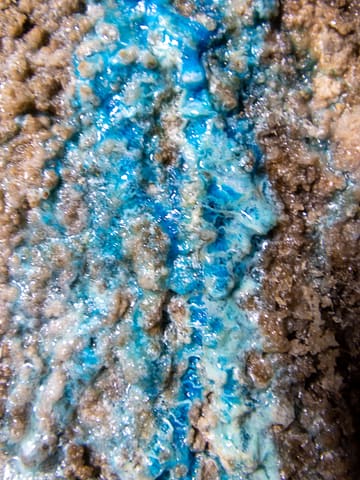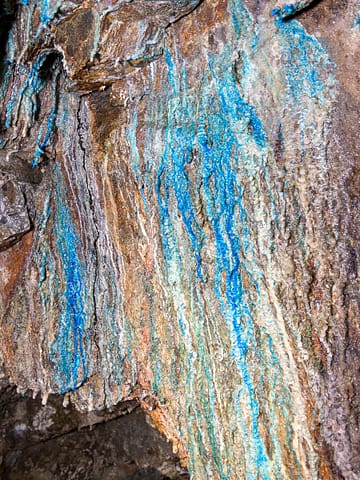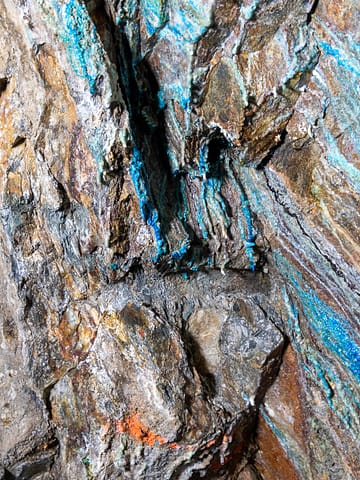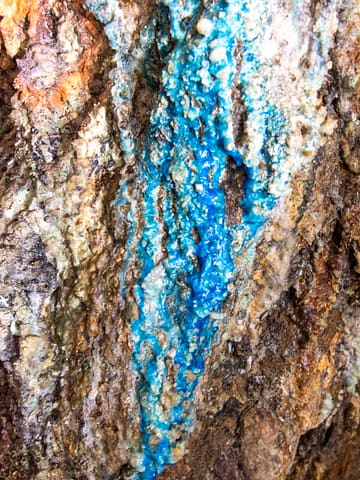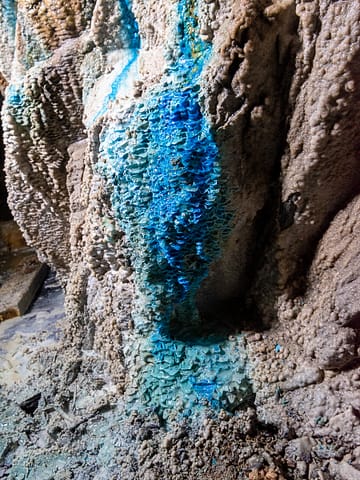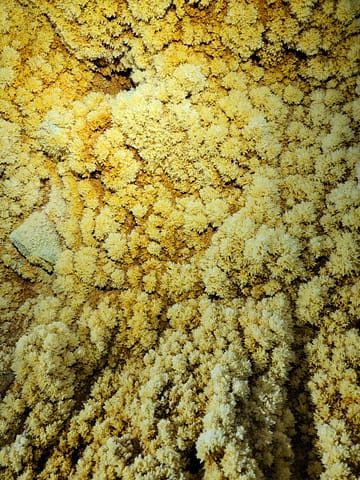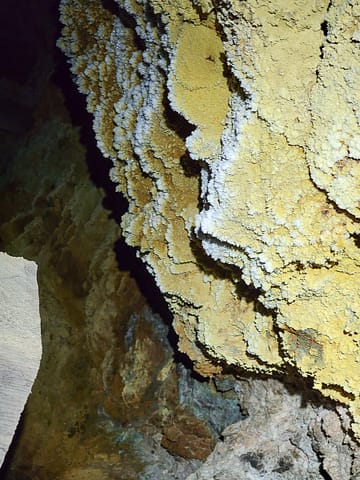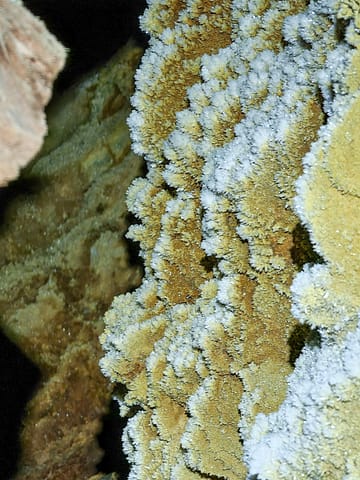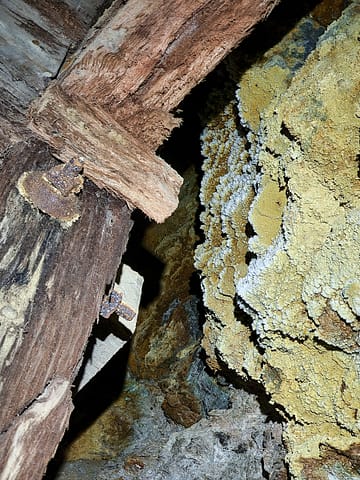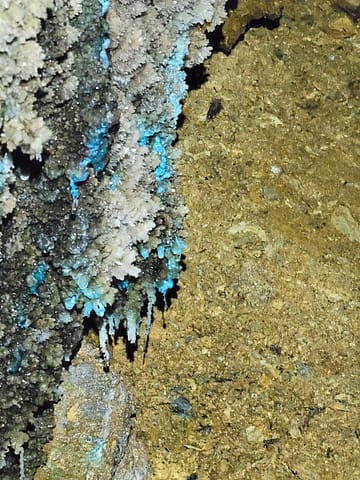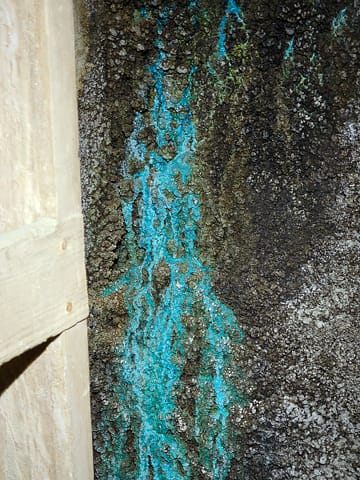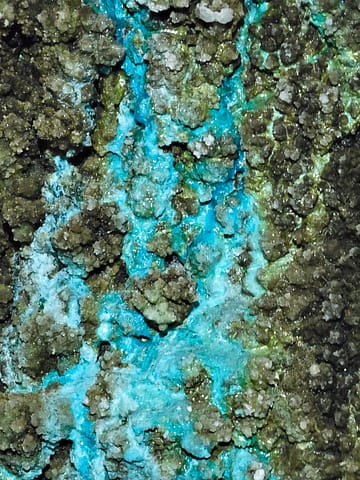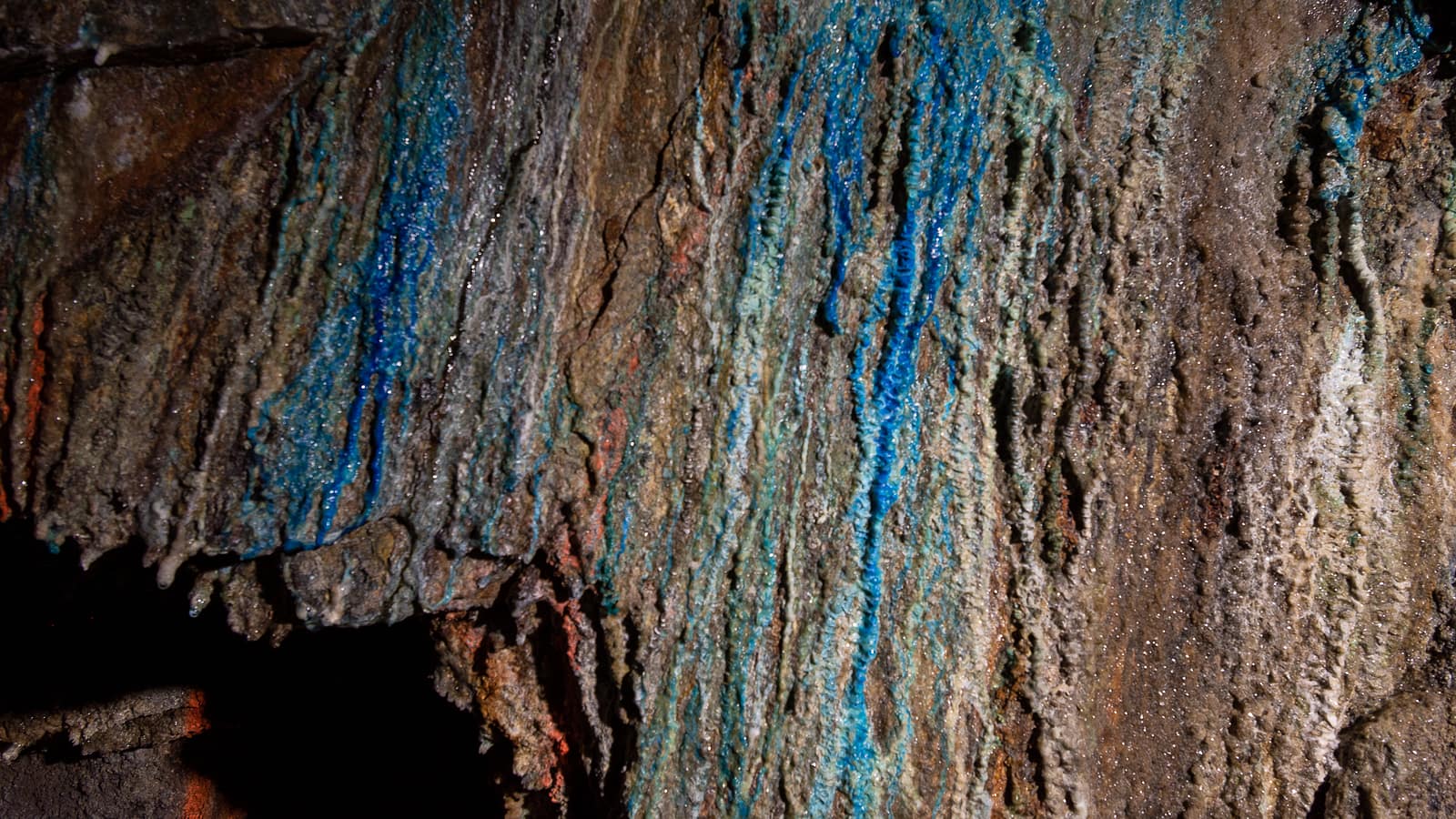
DeSoto Mine
A Short History
In September of 1875, prospectors discovered a rich outcropping on the northeast face of what would become known as the DeSoto Mine. First known as the Buster Copper Mine, it would not be until another 25 years that the property would become profitable. With the construction of “Murphey’s Impossible Railroad” and in 1902, the establishment of the small town of Middleton, the DeSoto mine boomed. However, this boom only lasted 20 years, with a steady decline until the mine eventually busted in 1972.
The Main Haulage Tunnel
The 600 or 6th level of the DeSoto Mine features the main haulage tunnel. As one enters this tunnel, they are greeted with a waft of cold air since most of the DeSoto underground workings and portals remain open. While the main haulage tunnel is in fair condition, there is a good amount of flooding in certain parts, especially near the portal. This flooding is because the backfill partially blocks the entrance, causing water to back up.
Advancing through the initially flooded segments, the main haulage tunnel of the DeSoto Mine begins to show its beautiful colors. Blue-tinged mud begins to appear on the side of the tunnels, indicating a heavy presence of copper.
The primary commodity found and mined in the DeSoto Mine is copper. However, prospectors have located gold, silver, lead, zinc, iron, and tungsten within the mineral deposits of the DeSoto Mine.
A long trek through the Main Haulage Tunnel of the DeSoto Mine leads to an intersection in the tunnel. Going straight leads to a humid section of the Main Haulage Tunnel. The area is exceptionally stuffy and ignored. Instead, the left drift route leads to fantastic underground features and workings.
The short drifts (tunnels) and winzes (underground mineshafts)
Within the 600 level of the DeSoto Mine are a few short flooded drifts, one of which is blocked off. Dick Chilson and his crew possibly created these drifts for a unique leach operation by water percolation conducted in the 1960s. The process began with miners pumping leach solution to the top of the mine. From there, they would discharge the solution into the openings of the mine. This pregnant solution then “collected in settling ponds in the lower adit level and flow(ed) out the adit and into the head of the precipitation box.” This heap leaching only lasted for a few years, though.
In 1984 a mine inspector reported that the 600 level of the DeSoto was “making water.” Since then, from recent mine explorer accounts, it seems that the 600 level has always had a fair amount of flooding. Although those accounts also reveal that the water level has dropped quite a bit in recent years.
One of the first short drifts encountered in the DeSoto features several drill holes. From the 1950s to the 1980s, multiple companies engaged in drilling work at the DeSoto Mine. These companies ranged from small owners/operators like Desoto Copper Corp. to significant energy corporations like Chevron. Pronto Exploration, a subsidiary of Noranda, appears to be the last company to engage in exploration work during the late 80s at the DeSoto Mine.
In a short drift in the 6th level of the DeSoto Mine is a stable ladder passage. From explorations in 2021, these ladders are one of the few (if only) easily accessible and safer ways to enter the upper levels of the DeSoto Mine. The short drift is interestingly blocked shortly after the ladder with concrete blocks.
The 6th level also features a couple of other winzes, though they are either flooded or inaccessible.
The Stoped (excavated) Rooms
The DeSoto mine features a few fantastic stoped rooms within its underground workings.
Within the 600 level are two large stoped rooms. The first features two entrances from a former adjacent tunnel split from the stoping of the room. This room is not featured on earlier underground maps since miners most likely stoped the room during the later production years. The bottom of the room is flooded and possibly reaches down to the 700 level of the mine. This room is just one of the few large multilevel stoped rooms in the DeSoto Mine.
The other stope within the 600 level of the DeSoto is of enormous proportions. Previous operators practiced combined stoping on half of the room, creating a now flooded pool within the room. Across the way is the inaccessible continuation of a drift, caved in. In terms of width, this is one of the largest stopes within the DeSoto Mine.
Near the entrance to this large stope is an ore chute, with noticeably weathered timbers still holding firm. The wood has been tagged for an unknown reason, perhaps pointing towards the exit of the mine.
Above the 6th level is a small stope.
An unknown level above the 6th level features another incredible stope (excavated area). While the stope isn’t that wide, it features an incredibly high ceiling of 100+ feet, complete with timbering, ladders, and rope. It appears that the top of the stope opens to another level. While unsure of which one, this is one of the upper underground levels of the DeSoto Mine.
The Underground Headframe
One of the most incredible structures within the underground workings of the DeSoto Mine is the “Underground Headframe.” While most of the wood that makes up this structure is rotting away, the headframe still stands, albeit with much damage. It features an ore chut o the backside. Below the headframe is the shaft into the lower levels of the DeSoto, which remain flooded. Beside it lies a skip bucket (ore bucket) miners once used to haul ore from lower levels below.
There is a cave-in behind the headframe. Partially buried within the rubble of the cave-in is an ore chute. This section of the mine contained high-grade ore, according to reports from the 1960s.
The Mineral Formations
The high and varying mineral content and intense moisture have led to many exciting mineral formations within the DeSoto Mine.
One of the more exciting mineral formations is this pictured “Bacon” formation found on the ceiling at the end of a short drift in the 600 level of the mine. The blue color within this mineral formation comes from the high copper content within the mine. At the same time, the red is most likely from the iron content within the rock. The mineral formation was most likely from water dripping down the ceiling.
The mine features many other incredible mineral formations, such as the ‘Blue Room,” featuring magnificent blue undulating copper mineral formations. These form from the copper deposits within the rock. Over the years, water has seeped through and dripped down the rock. The water contains high amounts of copper; as it runs down the rock, it deposits some copper.
Chemicals used for leaching have even created unique mineral formations. An example is this vibrant yellow formation from precipitant leaching near the underground headframe.
Lastly featured are shots of some other incredible mineral formations within the underground workings.

